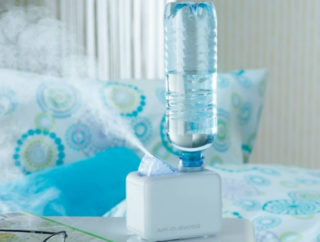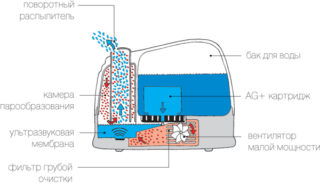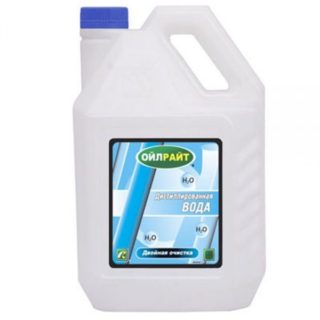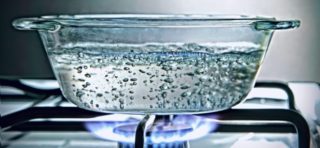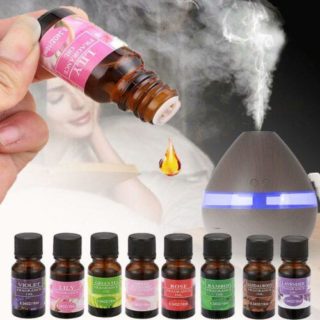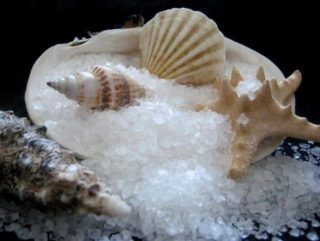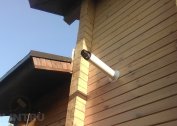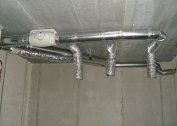When using modern ultrasonic humidifiers, there are a number of side effects. When loading ordinary tap water in them, clogging of the filter elements with the need for regular cleaning is observed. With low-quality refueling with a liquid saturated with salt solutions, white deposits settle on indoor objects, which you have to deal with by all available means. It is important to understand what water to fill in with an ultrasonic humidifier.
The principle of operation of an ultrasonic humidifier
To understand the principle of operation of an ultrasonic device, it is enough to learn the following points:
- Water poured into its capacity is supplied to a special plate, oscillating with the frequency of ultrasound.
- Due to such fluctuations, the liquid turns into a fine suspension.
- Inside the humidifier there is a built-in fan, the air flow from which accelerates water dust into the area to be humidified.
The vapor emitted by the device resembles a mist containing tiny particles of moisture. The latter are then picked up by air flow and come out through a special spray nozzle. It is designed so that vapor fog spreads in all directions as evenly as possible.
Features of work
The specifics of the operation of an ultrasonic humidifier include the noiselessness of its operation. The ear of a normal person does not perceive fluctuations in the ultrasound range. The user will hear when he turns on the light rustle of a miniature fan. Another feature of this device is the dependence of its functioning on the quality of the liquid poured into the working capacity.
Since ordinary tap water most often contains dissolved impurities, with ultrasonic evaporation, they spread throughout the room and gradually settle on objects in the form of a white coating. In addition, they accumulate on the inner surfaces of the refueling tank and the walls of the device, clogging the built-in filter element. The only reasonable way out of this situation is to use distilled water for the humidifier.
The usability of these devices include:
- ease of maintenance;
- low noise level;
- high moisturizing efficiency.
A controlled and easily eliminated disadvantage of ultrasonic humidifiers is the settling of white plaque after prolonged use and the need to clean surrounding objects.
Water for ultrasonic models
The ultrasonic variety of household humidifiers is the most “capricious” among the known species in terms of the quality of water poured into the tank. However, the samples of this technique are distinguished by their manufacturability and high performance. From the description of the principle of operation of the device it follows that this is the safest and most effective way of humidification, requiring additional costs and the fulfillment of a number of special requirements. First of all, they relate to the working fluid poured into the tank.
For effective operation of the device, it is recommended to use demineralized or distilled water. If you violate this requirement, you will often have to change the cleaning filter or cartridge, the cost of which is relatively high on the market.For users who are not ready to spend time and money on selecting fluids for filling into an ultrasonic device, it is best to abandon it and purchase a simpler steam device.
Water for other types of humidifiers
Steam humidifiers belong to the category of unpretentious spraying devices, if we evaluate them by the quality of the water used. Since, as a result of their action, an ordinary vapor is formed, which a person and his body breathe, the composition of the initial medium is not critical. As an exception, a situation is considered when the water flowing from the tap is of too low quality. In this case, a prerequisite for its suitability is the use of effective cleaning filters. If this rule is violated, salt deposits will accumulate in the internal parts of the device, which over time will lead to clogging of the device and its failure.
“Cold” humidifiers work on the principle of passing air dispersed by a fan through a special cartridge, where they are saturated with water vapor. When using ordinary running tap water in them, the built-in cartridge quickly becomes clogged, after which it has to be completely replaced. Caring users should worry in advance that the liquid poured into such devices should be thoroughly cleaned of all impurities present in it. One of the options for cleaning it is thorough filtering. But it will be even better if you pour in a humidifier container previously purchased or self-made distillate. If this is not possible, it remains to dispense with cartridges that reduce the rigidity of the applied water.
Distilled water
Manufacturers of modern models of humidifiers are required to use only distilled water for them, obtained by purification of the original product. During the distillation process, organic and inorganic impurities evaporate from it, resulting in a practically salt-free liquid. For its production at home, you will need to master a simple technology related to heat treatment. But first, ordinary tap water should be allowed to settle for about 7-12 hours. During this time, almost all inorganic impurities will precipitate out of it, which will facilitate the subsequent distillation procedure.
To evaporate the working fluid, you need to do the following simple operations:
- About half of the water is poured into a large enameled container.
- A deep plate is placed in it slightly smaller than the diameter of the main container.
- The pan is closed with a lid, turned upside down, and put on an open fire on a gas stove.
- As soon as the water begins to boil, pieces of ice, prepared in advance in the freezer, are placed on the inverted lid.
When water boils, the generated steam will begin to rise and settle on the outside chilled cover, forming condensate. Accumulating, it will begin to flow in the form of drops into a plate located below and floating in the water. This liquid will be distilled water, which is then poured into the filling capacity of the humidifier.
What can or cannot be poured into a humidifier
Before pouring any product into the humidifier, you need to make sure of its usefulness, as well as the safety for the human body and the device itself. In addition to distilled tap water, it is allowed to add aromatic oils and other substances to ultrasonic humidifiers, the information on which is given in the device instruction manual. It indicates what additives can be used in this particular sample of the humidifier and how often it can be done without harm to it.
Features of aromatic additives
In the design of some models there is a special place designed just under the capsule with aromatic or similar means. Under the influence of ultrasound, the liquid poured into the device along with the ingredients added to it evaporates into the surrounding space, refreshing and cleaning it at the same time.
Acceptable for use in humidifiers aromatic oils contribute to:
- improving respiratory function and human heart muscle;
- stimulation of the brain activity of people using the device;
- improving the structure of the skin and hair;
- increase immunity and body resistance to most known infections.
Fragrance air in an apartment or house should not be in all cases. Pediatricians do not recommend refueling aromatic oils and using devices as intended when there are children under the age of 3 in the house. Also, you should not use these substances too often and more than the time specified in the instructions. Violation of these rules leads to undesirable consequences when the harm from flavorings exceeds the benefit.
The abuse of various extracts often leads to clogging of the humidifier, which forces users to engage in periodic cleaning. Otherwise, the failure of an expensive device is possible.
Saline, essential oils and sea salt
Saline is poured into the working capacity of the ultrasound device with the goal of inhalation and moisturizing the nasal mucosa of sick people. It can be used in most models of the ultrasonic type, except for disk samples, which salt additives can harm. Some users prefer to pour in them essential oils and natural extracts that have a beneficial effect on human health. The phytoncides included in their composition through the lungs and skin enter the blood of the diseased and inhibit the growth of the number of microbes.
In ultrasonic household appliances, the use of classic sea salt is acceptable, which can be purchased at any hardware store. It is important to consider that it is allowed to be used only in those samples of devices where additives can be used in general in accordance with the manual. If the operating documents attached to the device indicate that it is intended for pure water only, it is advisable to completely eliminate the use of it.
